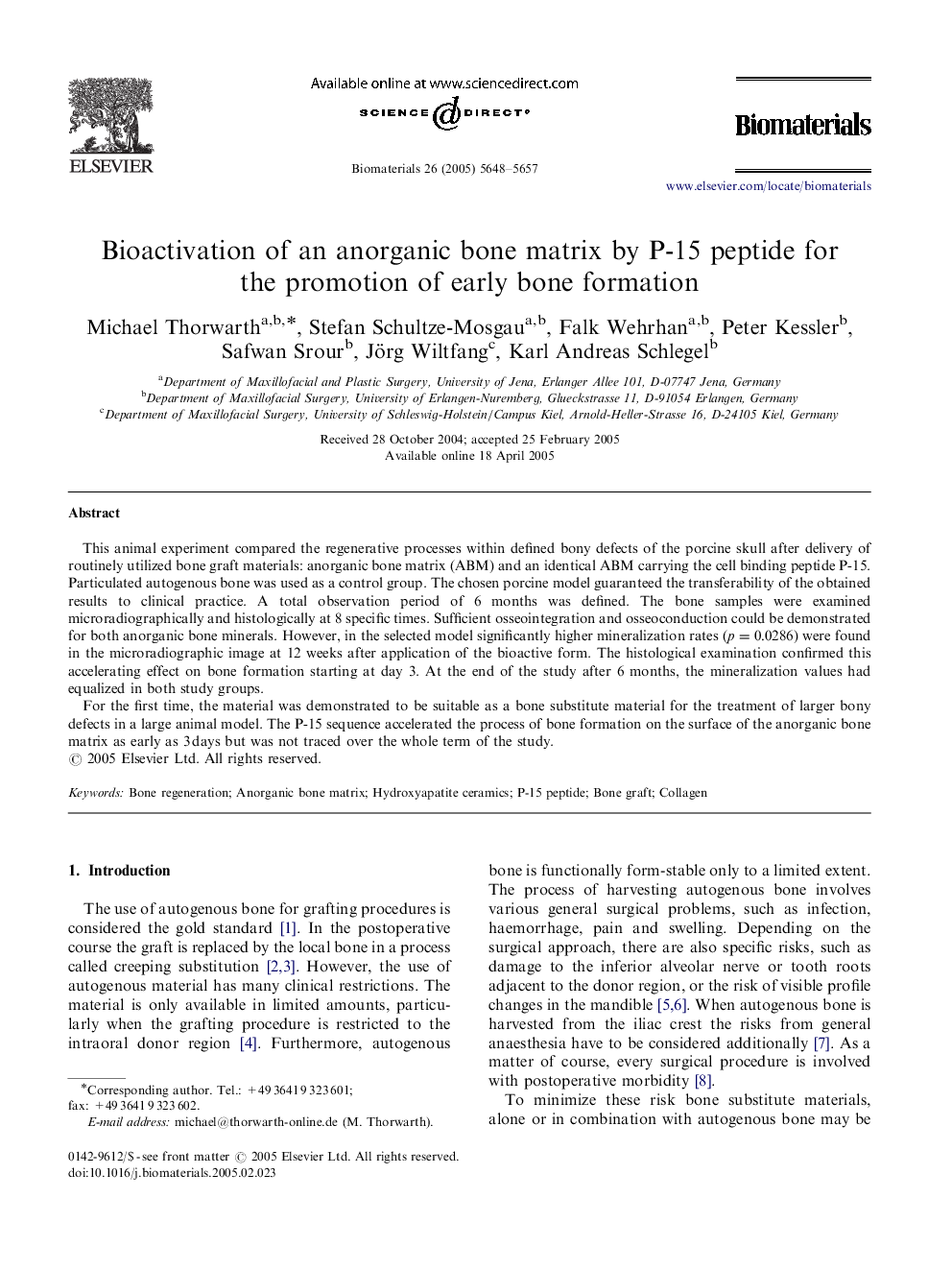| Article ID | Journal | Published Year | Pages | File Type |
|---|---|---|---|---|
| 11071 | Biomaterials | 2005 | 10 Pages |
This animal experiment compared the regenerative processes within defined bony defects of the porcine skull after delivery of routinely utilized bone graft materials: anorganic bone matrix (ABM) and an identical ABM carrying the cell binding peptide P-15. Particulated autogenous bone was used as a control group. The chosen porcine model guaranteed the transferability of the obtained results to clinical practice. A total observation period of 6 months was defined. The bone samples were examined microradiographically and histologically at 8 specific times. Sufficient osseointegration and osseoconduction could be demonstrated for both anorganic bone minerals. However, in the selected model significantly higher mineralization rates (p=0.0286p=0.0286) were found in the microradiographic image at 12 weeks after application of the bioactive form. The histological examination confirmed this accelerating effect on bone formation starting at day 3. At the end of the study after 6 months, the mineralization values had equalized in both study groups.For the first time, the material was demonstrated to be suitable as a bone substitute material for the treatment of larger bony defects in a large animal model. The P-15 sequence accelerated the process of bone formation on the surface of the anorganic bone matrix as early as 3 days but was not traced over the whole term of the study.
